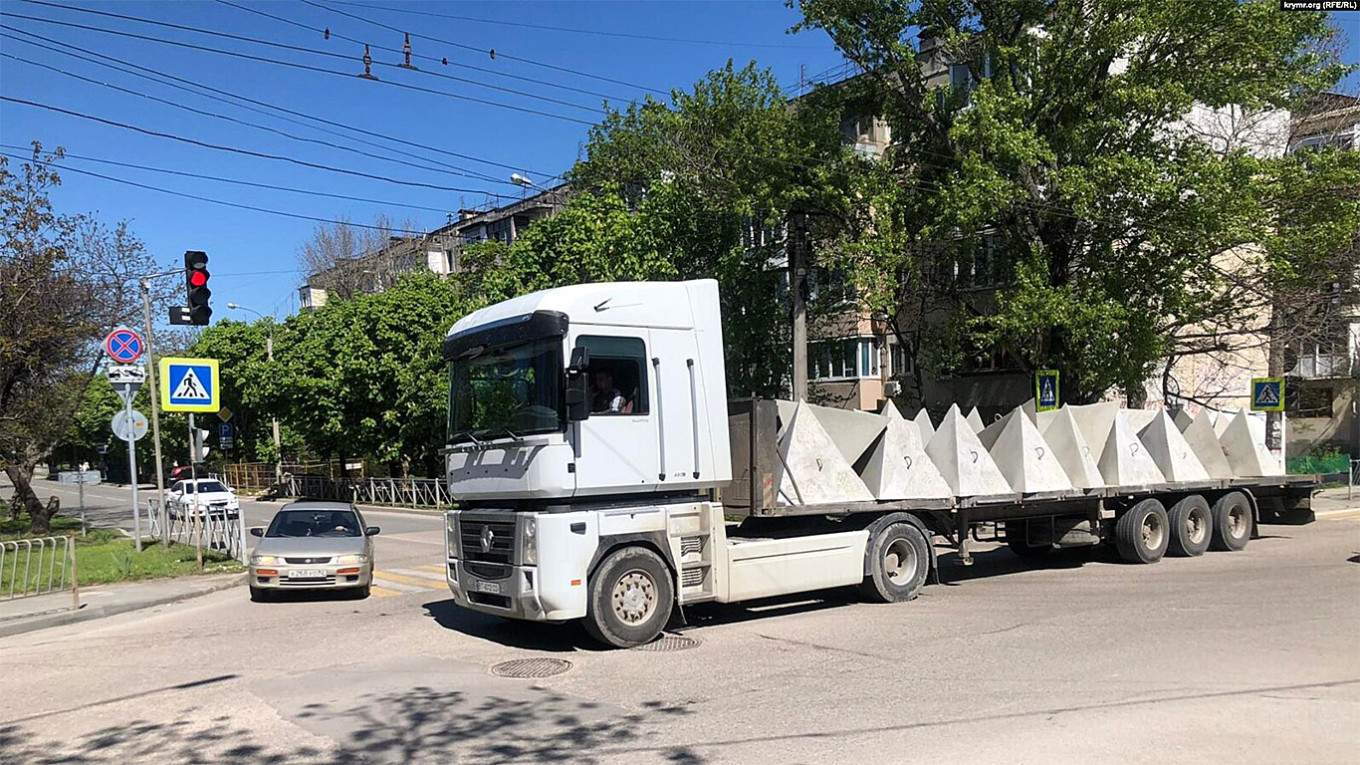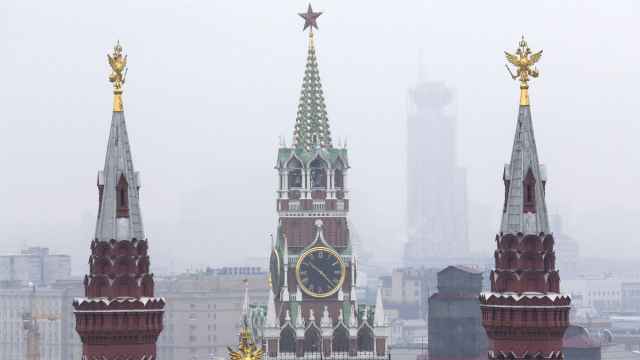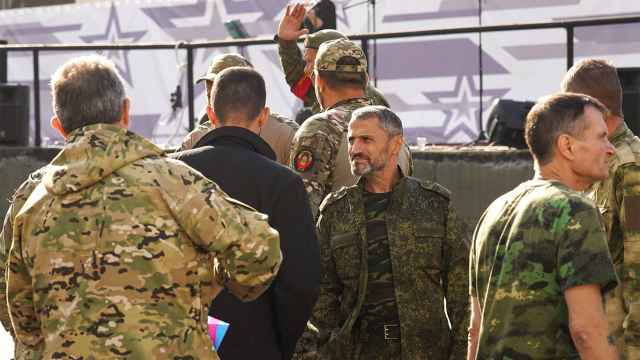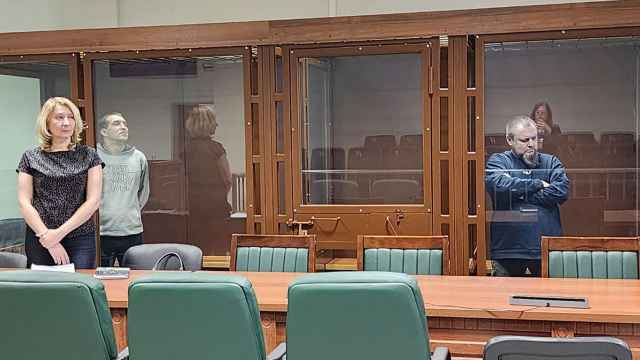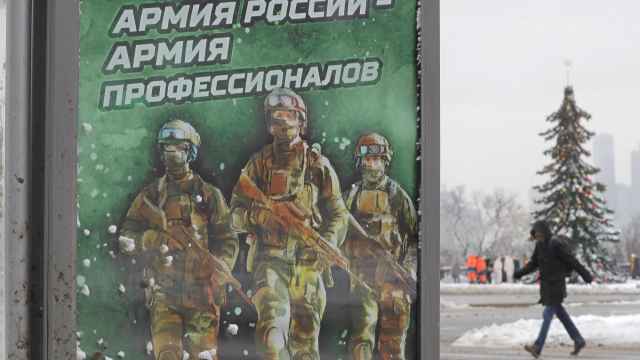Russian troops have spent the past six months constructing extensive defensive fortifications aimed at preventing Ukraine from launching its widely anticipated counteroffensive and liberating its occupied territories.
However, analysts warn that the effectiveness of these defenses will largely depend on Russian troops' ability to repel the Ukrainian armed forces' assault.
Lines of defense
Satellite images analyzed by the Financial Times and the BBC reveal a layered defense system consisting of anti-tank ditches, minefields, concrete “dragon's teeth,” iron “hedgehogs,” intricate trench networks and barbed wire fences.
“Russian forces really seemed to realize … that a lot of the terrain they had control over was going to be difficult to defend without entrenched positions,” said Brady Africk, an analyst at the American Enterprise Institute who tracks and maps Russian fortifications using open-source data.
Fortifications have emerged along the entire front line and within the depths of the occupied territories, including approaches to Melitopol in the Zaporizhzhia region, near the airbase close to Berdyansk on the Sea of Azov coast (a major shipping hub), and in Crimea (not only on the Perekop Isthmus but also along the peninsula's western coast).
Some of the largest fortifications have been erected in the northern part of the Zaporizhzhia region, anticipating a potential strike by the Ukrainian armed forces to block the “land bridge” from Crimea. Four settlements northeast of Melitopol — Tokmak, Pologi, Ocheretovatoye and Bilmak — are entirely surrounded by defensive fortifications.
Detailed images obtained by the BBC illustrate the depth of defense in Tokmak, which lies on the route to Melitopol. Reports have said that the occupying authorities evacuated civilians from Tokmak to transform it into a military fortress. There are two lines of trenches to the north, followed by a 2.5-meter-deep anti-tank ditch, three rows of “dragon's teeth” after 250 meters, a network of trenches after another 300 meters, and artillery positions behind them.
Additionally, mines have likely been hidden in the areas between the defensive lines, according to Mark Cancian, a senior adviser at the Center for Strategic and International Studies.
Trenches have also been dug along the E-105 highway which connects Melitopol in southern Ukraine with Kharkiv in the north, as it serves as a potential route for Ukrainian reinforcements in the event of a breakthrough of Russian defenses.
Significant fortifications have also emerged along the entire border of the Luhansk region, which is predominantly under Russian control, particularly in front of the cities of Sievierodonetsk, Lysychansk and Popasna, which were captured in 2022.
The human factor
Breaking through such a layered defense without heavy losses will be extremely challenging, said Mykola Bielieskov, a research fellow at the National Institute for Strategic Studies in Kyiv. Success can only be achieved through coordinated actions by different branches of the armed forces.
However, Bielieskov added that “On their own, obstacles don’t stop advancing forces. They will only [be effective] if manned properly and complemented with artillery fire, aviation and maneuver of reserves.”
With a front line stretching approximately 1,000 kilometers, the Ukrainian armed forces have an advantage, according to Andrii Zahorodniuk, chairman of the board of the Center for Defense Strategies and former Ukrainian defense minister.
“[Russian troops] are scattered around this frontline and we will always be able to find areas where they don’t expect us,” Zahorodniuk told FT.
As reported in the British intelligence's daily briefing on Saturday, Moscow has deployed "several battalions to reinforce" its positions in Bakhmut, which it claimed over the weekend to have captured following months of fighting. This is a "significant reinforcement," considering the already overstretched Russian units along the entire front line.
Dara Massicot, a senior researcher at the U.S.-based Rand Corporation noted that Russia’s performance would heavily depend on whether its frontline is staffed with “exhausted or maltreated, inadequately trained personnel.”
“The morale of Russian soldiers is variable, from tired to bad — it matters,” she told FT.
Rob Lee, a senior fellow at the U.S. Institute for Foreign Policy Studies, told FT:
“They don’t necessarily have that much combat experience. A lot of them have been just holding trenches. Will they stay in the fight, or will they run?”
A Message from The Moscow Times:
Dear readers,
We are facing unprecedented challenges. Russia's Prosecutor General's Office has designated The Moscow Times as an "undesirable" organization, criminalizing our work and putting our staff at risk of prosecution. This follows our earlier unjust labeling as a "foreign agent."
These actions are direct attempts to silence independent journalism in Russia. The authorities claim our work "discredits the decisions of the Russian leadership." We see things differently: we strive to provide accurate, unbiased reporting on Russia.
We, the journalists of The Moscow Times, refuse to be silenced. But to continue our work, we need your help.
Your support, no matter how small, makes a world of difference. If you can, please support us monthly starting from just $2. It's quick to set up, and every contribution makes a significant impact.
By supporting The Moscow Times, you're defending open, independent journalism in the face of repression. Thank you for standing with us.
Remind me later.


